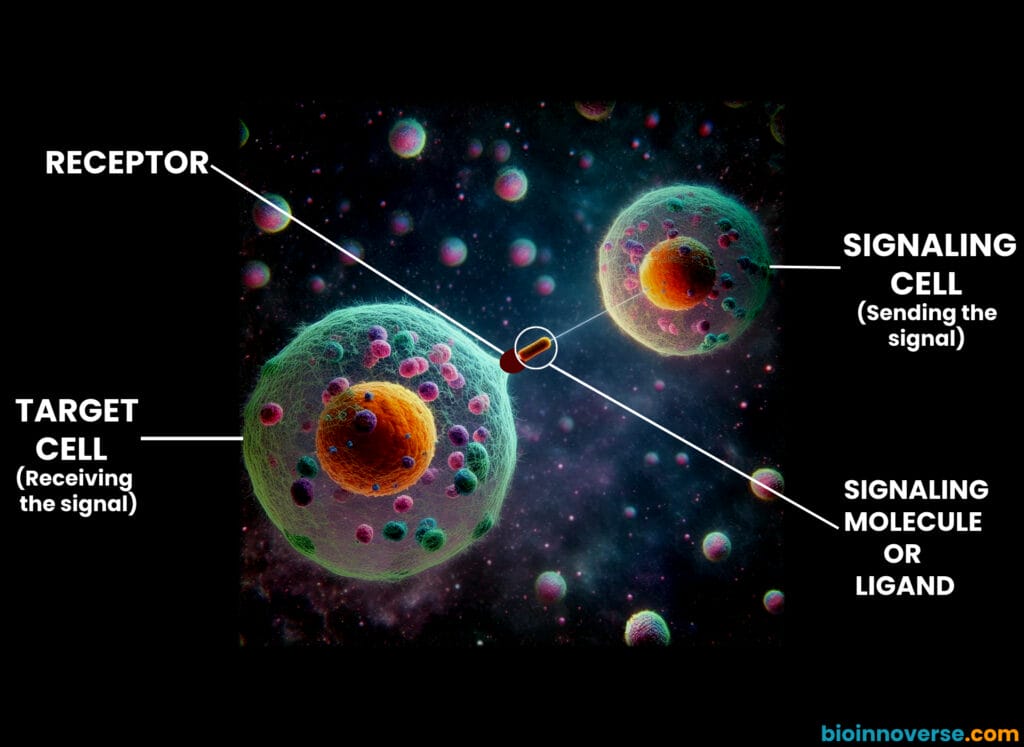Before diving into the complexities of cell signaling, let’s start with some basic examples. At this moment, we are delivering information to you. To pass on this data, we must use some sort of method or mode of communication. Currently, you are receiving information in written form through the Internet and processing it accordingly. This is one of the ways we humans communicate. Some animals coordinate with each other by releasing hormones. For example, we have seen many times, Ants moving in a straight line. This behavior is the result of releasing chemicals that guide the ants behind them, indicating the correct path to follow. Similarly in various scenarios, different organisms use different types of messages and signals for communication.
Effective communication is crucial not just for human interactions but also for the intricate systems within living organisms, particularly the fundamental units of life—cells. Cells also require a form of dialogue for coordination. However, the question arises: how do these cells communicate? They lack mouths and do not communicate verbally like humans. So, to address this, they utilize an incredibly distinct method of communication.
UNIQUE LANGUAGE OF CELLS:
Consider a scenario with three types of cells: the Signaling cell responsible for releasing a signal, the Target cell designed to receive the signal, and the non-target cell, which is present but currently not needed by the Signaling cell, hence referred to as the nontarget cell.
The Signaling cell releases specific signals, often in the form of chemical agents such as hormones. When signals are released, the target cell should have some specific entity that accepts the signal, and for that, the target cell has a receptor. This receptor is uniquely designed to receive and respond to these specific signals. This step of binding a signal molecule to its receptor is called reception. When a signal molecule binds the Target cell’s receptor, the receptor becomes activated and transfers the message of the signal molecule through a downstream cascade inside the cell where one molecule activates the other which in turn activates yet another molecule. It’s like a cellular dance triggered by those initial signal molecules. This phase of cell signaling is referred to as transduction. This cascade of events can lead to changes in gene expression, resulting in the upregulation or downregulation of specific protein production. It may result in alterations in the cell’s biochemistry and biology, and this final stage is termed the response. Notably, the non-target cell coexists and may also have receptors but these receptors lack specificity for the signal molecules released by the signaling cell.

Overall, the process of cell signaling is characterized by its selectivity, ensuring that only specific cells respond to the signals released by the signaling cell. It’s like being in a room with many people and wanting to convey a private message to a specific person, such as your friend, without sharing it with anyone else, so you send him a private text on his mobile phone.
